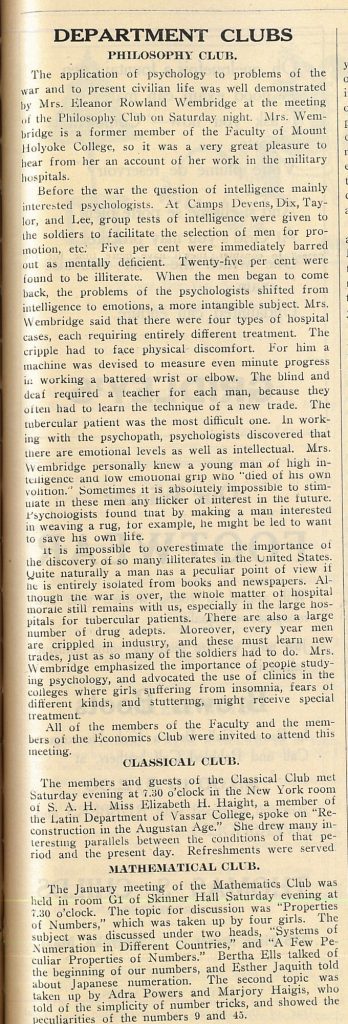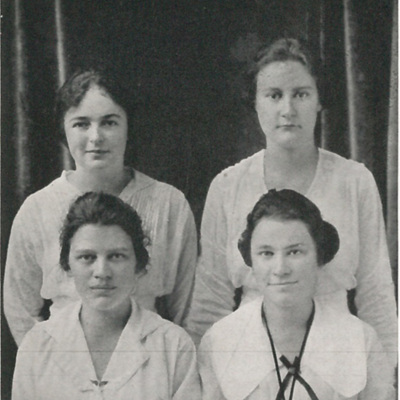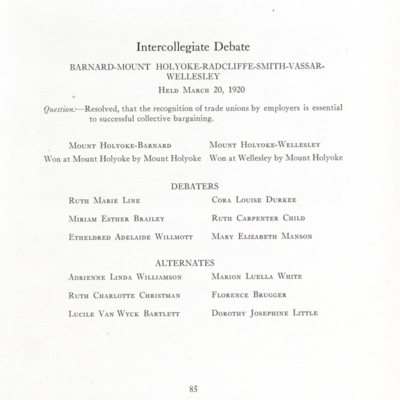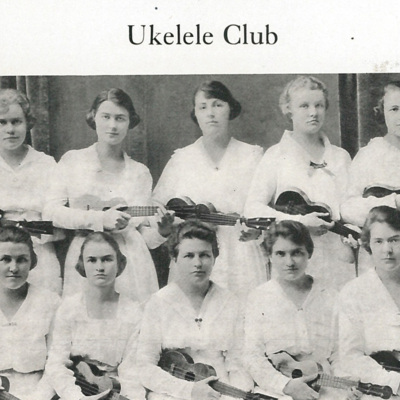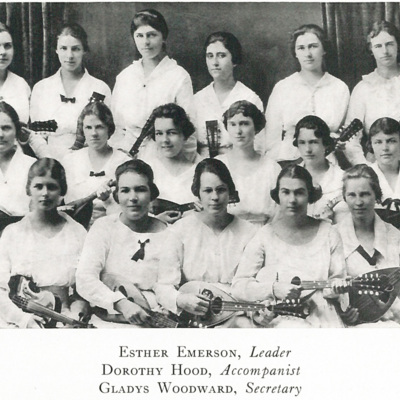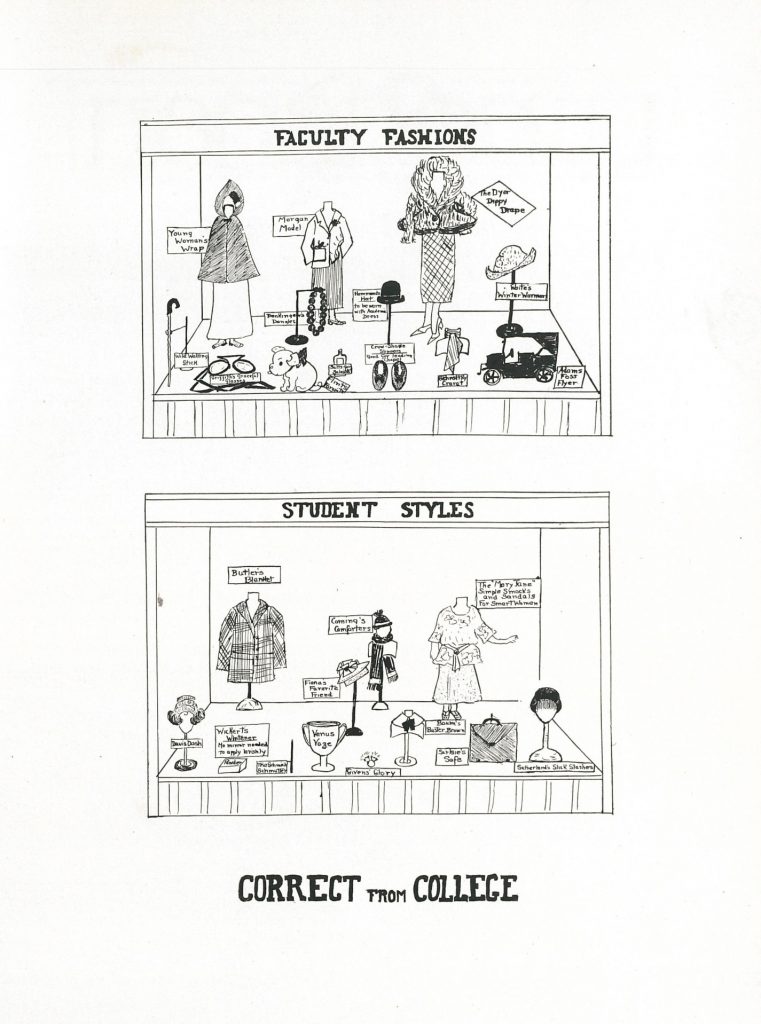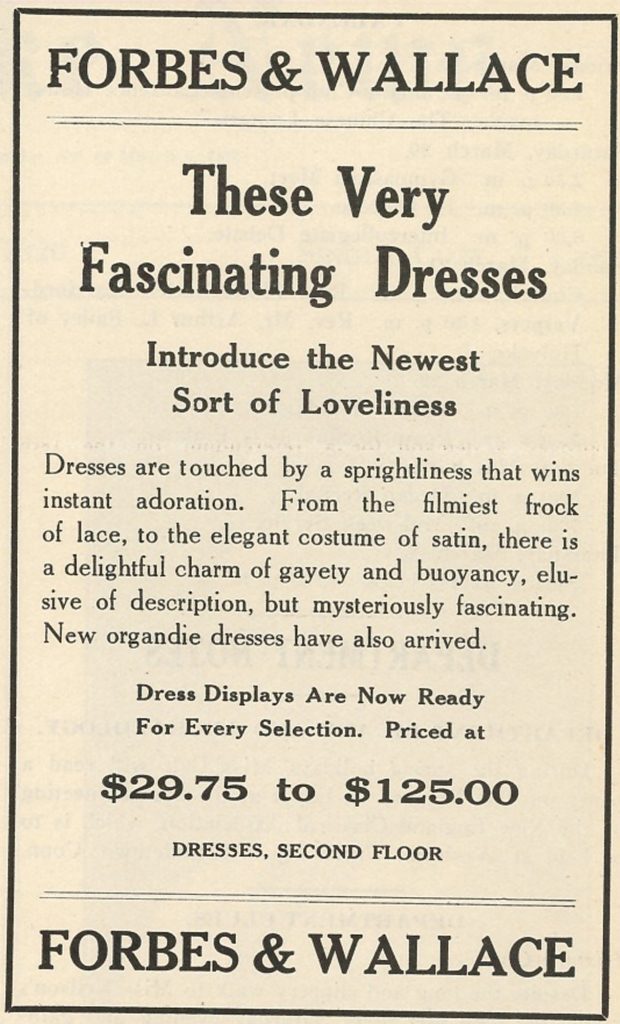Students of Several Trades: Clubs and Organizations
Department Clubs
The French, German, History, Art, Philosophy, and Mathematics Departments formed clubs which allowed students majoring in these subjects to meet one another and gain more knowledge in their field(s) of study. The Department Club meetings usually took place in a faculty member’s home or someplace on campus on Saturday evening, and both members of the faculty and students were welcome to attend. The topic of discussion varied from meeting to meeting, which commonly took place once per month –- not drastically different from the departments clubs that exist today at Mount Holyoke.
Popular Clubs & Organizations on Campus
Other organizations included the Debating Society, which was comprised of sophomore, juniors, and seniors. Beginning in 1913, they competed in an intercollegiate triangular debate against Vassar and Wellesley, which they won against both colleges in 1916. Each year the Anna C. Edwards Prize for Excellence in Debate awarded $1,000 to the best debater.
Musical organizations included the Glee and Mandolin Clubs, as well as the College Choirs. The choirs consisted of the Junior and Vesper choirs, and Miss Dickinson (whom the dorm is named after) led the Junior Choir, that sang each week during Sunday service.
If not being used for dances and events, what was Chapin used for? Acutally, even in 1920, Chapin was known for its dances and social events. The “Le Giocese” organization, founded by the Class of 1905, aimed to improve social life on campus, and often organized dances and other social events in Chapin. Membership was required in order to attend these events, and since membership was open to all students (along with a 50 cent charge), students who were looking for a social outlet within the College’s academic setting could easily join.
And finally, what about those interested in drama and performance? The Dramatic Club put on five performances per year, four major and one minor. During Commencement week, one play was performed for seniors and their guests. The club comprised of 50 members from the sophomore, junior, and senior classes, and included scene-painters, musicians, costume designers, playwrights, and actresses.
What Not to Wear in 1920: Faculty and Student Fashion
The “Faculty Fashions” in this diagram include a young woman’s wrap, a wild walking stick, Griffith’s Graceful Glasses, Denkinger’s Dangles, Morgan Model, a Hammond’s Hat (to be worn with academic dresses), crow-shaped slippers (good for leading chapel), The Dyer Dippy Drape, White’s Winter Warmer, and Adam’s Foss Flyer. These items produce a classy, modest, and sophisticated style, which is certainly what the faculty of 1920 aimed for.
The “Student Styles” include a Davis Dash, a Butler’s Blanket, Wickert’s Whitener (makeup powder), Venus Vaze, Coming’s Comforters, Given’s Glory, Sarlsie’s Safe, The “Mary Jane” Simple Smocks and Sandals for Smart Women, and Sutherland’s Slick Slashes. These items all work together to create a fun, sophisticated, and young style that many of the students took on.
During the 1920s, women at Mount Holyoke generally wore clothing like knit dresses, knit sweaters, knit socks, knits gloves, knit skirts… clearly, knit was the fabric of choice for most. It was common for women to change clothes multiple times throughout the day at this time, usually to different styles of dresses, because they “looked fresher” after changing – so mostly for aesthetic purposes.
Forbes & Wallace was an American department store chain that was based in Springfield, Massachusetts. It was considered Springfield’s leading retail store, consisting of eight floors with varying departments. Advertisements for the store were frequently included in copies of The Mount Holyoke News, and it’s likely that a good portion of the student body had shopped there at one time or another.
